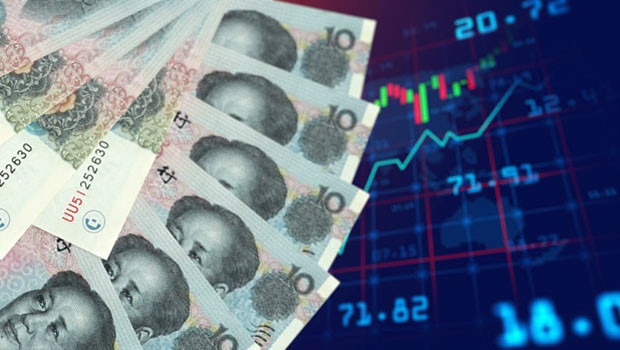Asia report: Markets jump as PBoC announces series of easing measures

Stock markets in the Asia-Pacific region were led by a surge in mainland China on Tuesday, marking their best day in over four years.
This rally was driven by a series of policy easing measures announced by the People's Bank of China, including a 50 basis point reduction in the reserve requirement ratio.
The Reserve Bank of Australia meanwhile held its benchmark policy rate steady, aligning with market expectations.
“The PBoC in China made headlines overnight with significant stimulus measures meant to meet the ambitious 5% annual growth objective for 2024,” said Patrick Munnelly at TickMill.
“The reserve requirement ratio was lowered by 0.5 percentage points, and banks are expected to reduce it even further before the year is over.
“This will allow them to provide customers with additional liquidity. In an effort to stabilise the real estate market; among other steps taken are the reduction of the minimum deposits required from 25% to 15% for second-home buyers and the lowering of the one-week reverse repo operating rate from 0.2% to 1.5%.”
Munnelly said the creation of an equity stabilisation fund through a central bank swap facility was also mentioned.
“It should come as no surprise that the first market observation is that Chinese equity indices have risen the most throughout the Asian session.
“But when it comes to flashy bursts of credit-driven stimulus, it feels like we have been here before, and yet China's housing crisis keeps getting worse and equity markets have performed poorly.”
Asian markets jump as Australasia’s bourses drag
In China, the Shanghai Composite rose 4.15% to 2,863.13, while the Shenzhen Component increased by 4.36% to 8,435.70.
Key stocks like Shanxi Guoxin Energy, Jilin Yatai Group, and Yonghui Superstores all saw gains exceeding 10% in Shanghai.
Hong Kong’s Hang Seng Index also saw substantial gains, climbing 4.13% to close at 19,000.56.
Shares of China Merchants Bank, JD.com, and Li Auto all soared by more than 10%.
In Japan, the Nikkei 225 rose by 0.57% to 37,940.59, and the Topix gained 0.54% to 2,656.73.
Tokyo’s benchmark was led by strong performances from Japan Steel Works, IHI Corporation, and Fujikura, which all posted gains of over 5%.
South Korea’s Kospi advanced 1.14% to 2,631.68, driven by robust gains in companies like L&F, Lotte Chemical Corporation, and Hanwha Solutions, each rising over 10%.
Australia's S&P/ASX 200 dipped slightly, falling 0.13% to 8,142.00.
The market's decline was led by Light & Wonder, which dropped 18.42%, and Summerset Group and Ebos Group, which also faced notable losses.
New Zealand’s S&P/NZX 50 fell by 0.81% to 12,303.99, with Pacific Edge, Vista Group International, and Ebos Group leading the declines.
In currency markets, the dollar was last up 0.49% on the yen to trade at JPY 144.31, while it weakened 0.07% against the Aussie to AUD 1.4614, and retreated 0.14% from the Kiwi, changing hands at NZD 1.5935.
Oil prices saw a boost, with Brent crude futures last up 2.37% on ICE to $75.65 per barrel, and the NYMEX quote for West Texas Intermediate rising 2.43% to $72.08.
PBoC easing measures in focus, RBA maintains interest rates
At the top of the economic agenda was the People’s Bank of China (PBoC), which unveiled a series of policy easing measures aimed at boosting the economy in a rare announcement from central bank governor Pan Gongsheng.
Among the steps, the PBoC said it would reduce the reserve requirement ratio for banks by 50 basis points, though the timeline for the adjustment was not specified.
Additionally, the bank said it would lower the seven-day reverse repurchase rate from 1.7% to 1.5%.
Pan also hinted at a possible reduction in the loan prime rate (LPR) by 0.2 to 0.25 percentage points, without clarifying if it would apply to the one-year LPR, currently at 3.35%, or the five-year LPR, which stands at 3.85%.
Other measures included lowering down payments for second homes and injecting CNY 1trn in long-term funds to stimulate economic activity.
In Australia, the Reserve Bank maintained its benchmark interest rate at 4.35%, meeting expectations from analysts.
Reporting by Josh White for Sharecast.com.